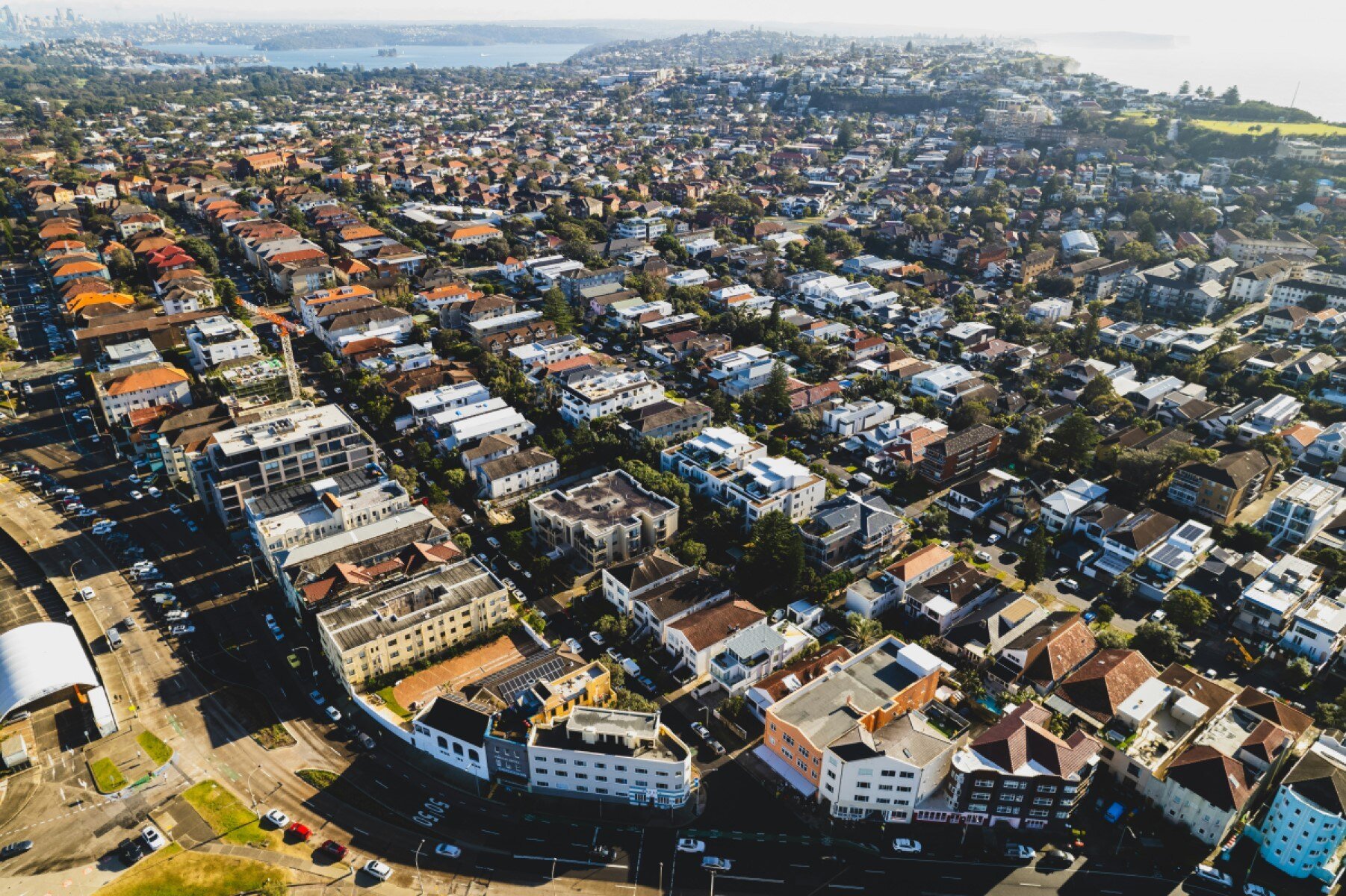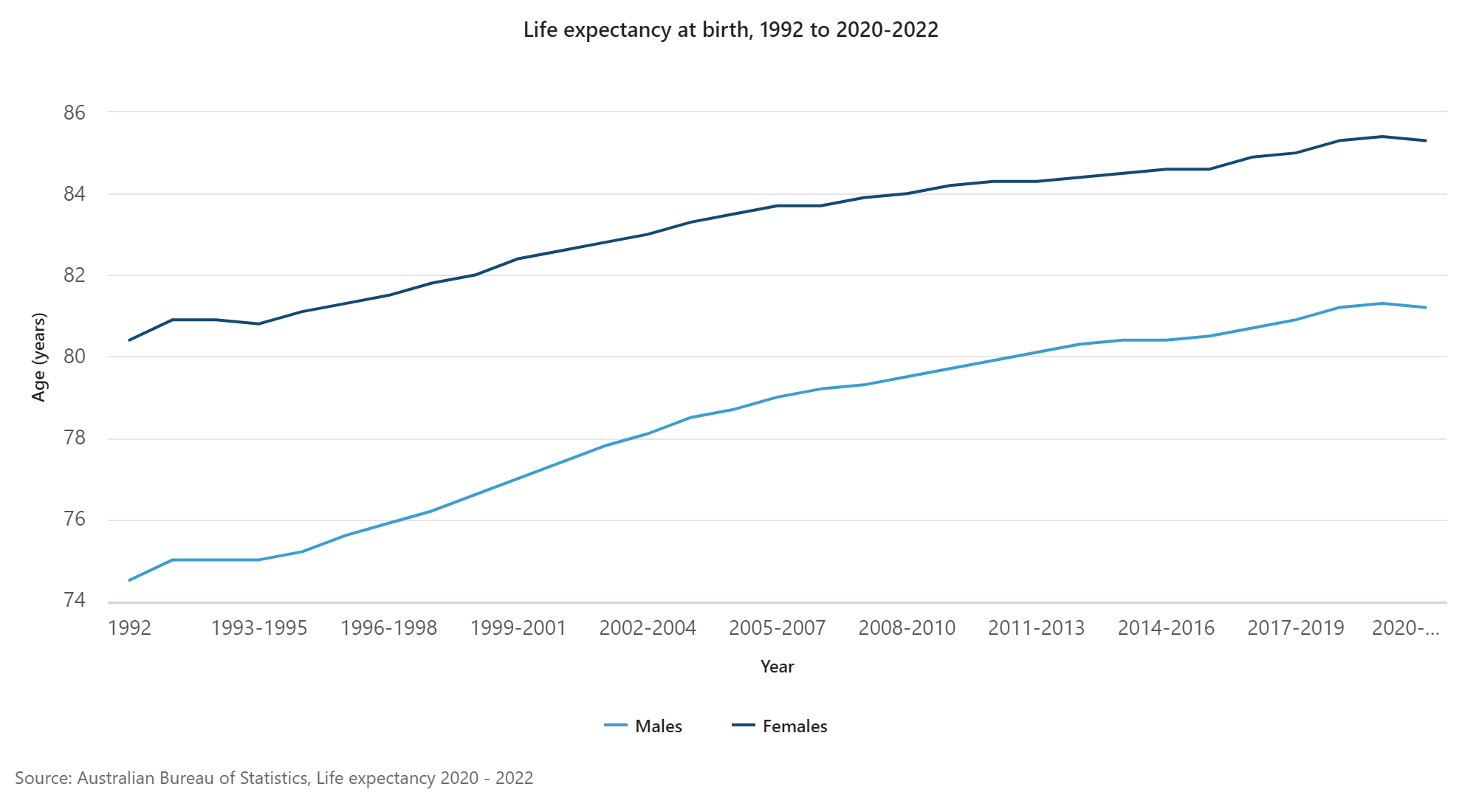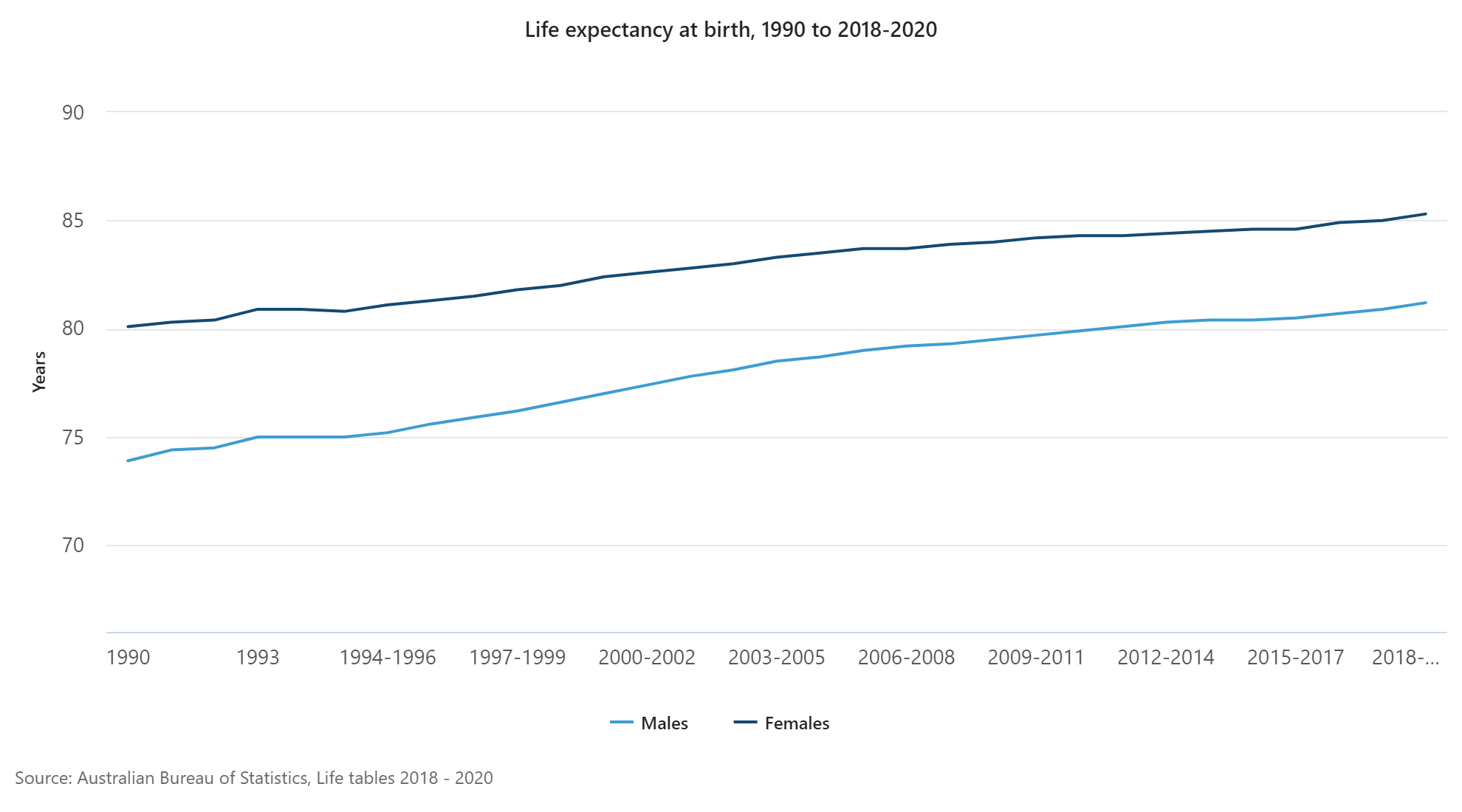Maybe it says something about the type of person I am, but even on holidays my professional life manages to come to the fore. It’s really more about my interest in cities and places, and what makes them tick. I’ve recently returned from Russia where I spent time in Moscow and St Petersburg, two of the more interesting cities on this planet (in my humble opinion). Not only did some of the critical events of the twentieth century happen on Russian soil, but they also have an interesting demographic history and there are aspects of these cities that Australia could learn from.
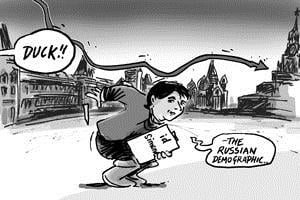
Population
Russia’s version of the ABS is called Rosstat (and yes the page is mostly translated into English). Like the ABS, they produce a wide range of population and economic statistics. The chart below shows the population of the Russian Federation since 1990, which has declined by about 4% (over 6.3 million people) since the early 1990s. Russia’s peak population occurred in 1992, when it reached 148.56 million. Between 1995 and 2008, the country recorded negative population growth due to an excess of deaths over births, ie natural decrease. Around the turn of the century, the amount of natural decrease was approaching 1 million persons per year ie almost 1 million more deaths than births.
Population of the Russian Federation, 1990-2009
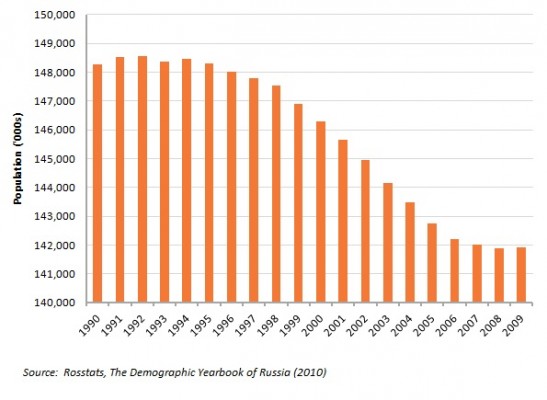
So why did these trends occur? We know from history that the early 1990s was a time of great social change in Russia, when the Soviet Union dissolved and the economy was increasingly exposed to global market conditions. There were obvious social and economic impacts on the population and this has had demographic impacts. For example, the fertility rate in Russia was around replacement level until the late 1980s, but after 1990 it declined sharply, from 1.892 to just 1.369 in 1993. Thereafter it remained low throughout the 1990s, bottoming out at 1.195 in 1999. It has increased since then, reaching 1.537 in 2009. The impact of this decline in fertility is a much smaller cohort of children and young adults compared to the generation preceeding them.
Russia’s life expectancy also took a hit after the break up of the Soviet Union. In 1988, life expectancy was 69.9 years, but it declined in the early 1990s to reach a low of 63.85 years in 1994. This is thought to be the result of declining health standards but there are also a large number of deaths from preventable causes such as smoking and excessive alcohol consumption, particularly amongst males. You can still smoke in restaurants in Russia – a real shock to my system – though fortunately they are changing the law next year. The trend in life expectancy has shown volatility since, but by 2009 it had reached 68.67 years. Life expectancy for males recorded a particularly sharp decline in the 1990s, reaching a low of 57.42 years in 1994, and staying below 60 years for much of the following decade. By way of comparison, life expectancy for Australian males reached 60 years during the 1930s and has increased steadily since.
Interestingly, many people assume that Russia recorded massive out migration after the break up of the Soviet Union and this is what has caused the population decline. But a closer look at the data shows that this is not necessarily the case. Russia has not recorded a net migration loss since the 1980s and in fact gained almost 1 million people through migration in 1994 (see chart below). The reason for this is net in-migration from the former Soviet republics, which in 2009 accounted for about 90% of the net migration gain. Russia does lose population to countries such as Germany, Israel and the United States, but the numbers have declined signficantly since 2000. Migration to Australia is negligible.
Components of population change, Russian Federation, 1990 – 2009
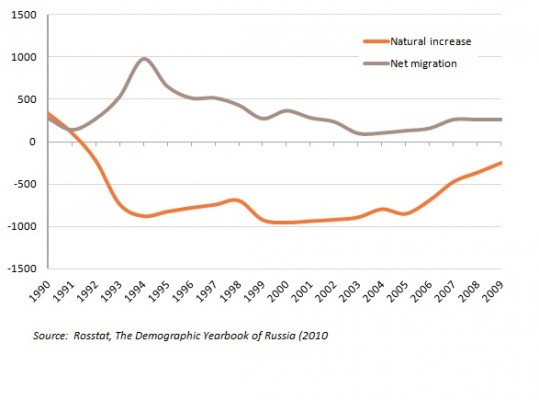
Many Australians think we are growing far too quickly and that zero population growth should be government policy. In my view, this is simply a way of saying “no more migration”. It’s important to note that zero population policy is not achieved by simply cutting migration. The way populations grow and change is more complex than that, as we have previously explained. As you can see from the experience of Russia in the 1990s, there were a combination of factors resulting in population decline, yet at the same time there were other processes which in normal circumstances would result in growth eg the massive net in-migration from the former Soviet republics. The implications of the decline in population will be felt socially and economically for some time – there are many parts of regional Australia that are dealing with the challenges of population decline, many of which will probably never return to positive growth in our lifetime.
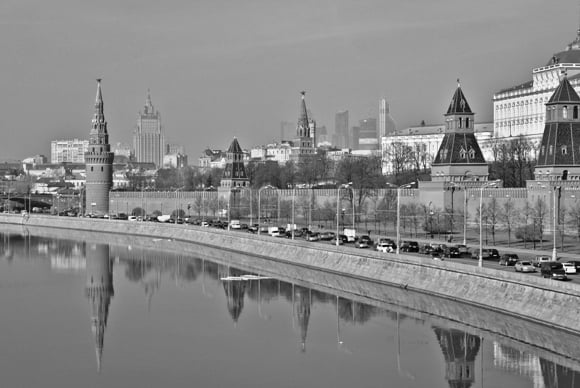
Moscow – I like this photo because it captures the past, present and future – the Kremlin and one of the 1930s Stalin skyscrapers, the traffic, and in the distance, the office towers of the new economy. If you look closely you can see the reflection is broken by a chunk of ice floating down the river – it only stopped snowing the week before I was there!
Transport
One of the more fascinating aspects of Moscow and St Petersburg is their metro system. It’s incredibly efficient, fast and in somewhat of a novelty – you buy a ticket from a human being rather than a machine. I never had to wait more than 5 minutes for a train, and I always felt safe due to the number of people around, even later in the evening. The visual aspects are quite stunning with some of the older stations decorated in the 1930s Stalinist style, complete with chandeliers and marble columns. This style was meant to reinforce the dominance of the Soviet way of life, but it’s a tourist attraction in its own right, with each station being unique. It’s also incredibly cheap at 30RUR for a ride in Moscow, 28 RUR in St Petersburg (around 90-95 cents). It’s the same price regardless of the distance travelled, but there is no concept of multi-mode tickets. There are buses in both cities but the metro in Moscow in particular is so extensive that it wasn’t necessary to use other modes of transport.
The Moscow metro dates from the 1930s, and the St Petersburg metro from the 1950s. Both systems have been extended signficantly since they were opened and continue to do so. St Petersburg added new stations as recently as 2012, and Moscow is currently embarking on a major expansion project. According to this list, the Moscow metro is the fourth busiest in the world, and St Petersburg sixteenth. Australian cities don’t rate a mention as they technically don’t have metro rail systems, but the total number of boardings on Melbourne’s public transport system in 2010-11 was only about one-quarter of the number on the Moscow metro.
Personally I think Australian cities have much to learn from the public transport systems of Moscow and St Petersburg. Certainly our cities are structured differently and have smaller populations and densities, but that doesn’t mean we can’t look to what works and apply it in our backyard. One aspect I liked was the one fare regardless of distance travelled. It simplifies the ticketing system more than I thought, and for anyone familiar with Melbourne’s new myki ticketing system, it would make the annoying “touch off” redundant. Russians are catching up to the western world in terms of their car ownership but their residents clearly have options available to them in terms of how they get around the city. You have to wonder why people drive in central Moscow when the congestion and pollution created by increasing numbers of cars on a 5 lane ring road is obvious. It’s unfortunate that in the last week, the Victorian State government has decided to prioritise yet another road project ahead of much needed public transport projects. It reinforces the dominance of the car as the only choice (in many instances) in how we get around, in the view of many why we have transportation issues in the first place.
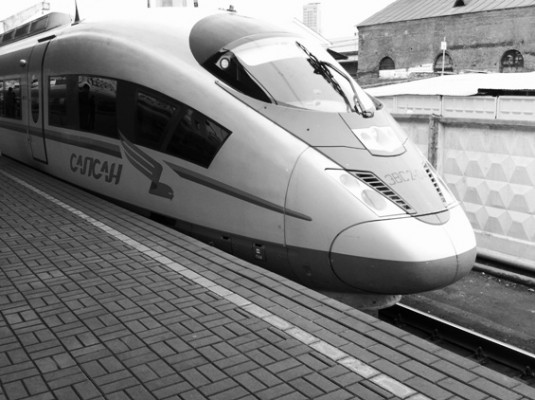
Travel between the two cities is critical due to their importance to the Russian economy, so I was keen to ride on the Sapsan train (pictured above), which covers the 700 odd kilometres in just four hours. This is slightly more than the road distance between Melbourne and Canberra, which can take twice as long to drive. The top speed on the Sapsan was 220 kilometres per hour, but most of the time it was travelling between 150 and 180. Apparently it’s well patronised by business travellers during the week due to its speed, frequency and comfort, not to mention the train terminates in the centre of town. This happens despite the frequency of air travel between the two cities. In Australia debates about the merits of high speed rail arise periodically, but like most rail projects in this country, it gets written off on the basis of cost. Like Russia, Australia is a big country, with some distance between our major cities. If the Russians can implement high speed rail, is that not something we can do so here?
Have you been to Russia? Share with us your thoughts and insights about their cities and population. We’d love to hear from you!
Access our demographic resource centre to understand the population of local areas in Australia and New Zealand!








